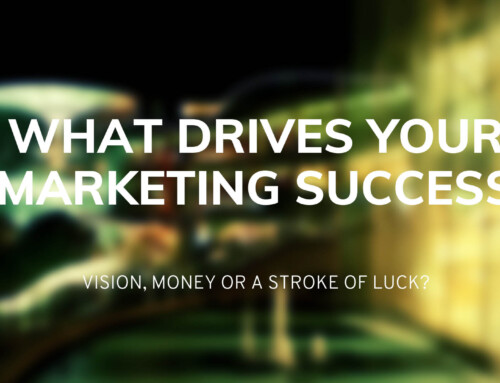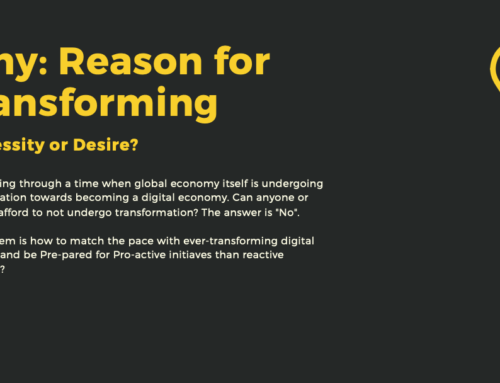Essential Personalization Statistics 2020
We are living through a time of extreme personalization, commonly known as hyper personalization in a world of marketing. Today, consumers prefer personalized omnichannel experiences. The evolving digital technology has evolved the consumers as well. For a brand, risk of getting ignored (ROI) is more costly than the risk of less/negative return on investment (ROI). Hyper personalization leverages artificial intelligence to produce consumer specific content, product, and service information.
Observe any of the big brands like Amazon, Netflix, Spotify, and Starbucks to understand the extent to which they have embraced hyper personalization in 2020.
Personalization Vs Hyper Personalization
In simple words, personalization goes as long as individual’s personal & transactional information; things like name, title etc. Hyper personalization is going deeper to behavioral and real-time data to create contextual communication. The next question is about the need for hyper personalization. A few of the insights is as follow:
- A piece of message has only 8 seconds to capture and hold the user’s attention (Source)
- Content based user engagement has gone down by 60% due to information overload. (Source)
- 75% of consumers prefer buying from brands that offer personalized experiences (Source)
Prevailing Misconception
Hyper personalization is only for e-commerce. This is one of the most common misconception around hyper personalization. The concept is easily applicable to any of the traditional to modern industries or business. Every business is a customer-facing business. Likewise, every business is a digital business because modern consumer is everywhere on the internet. Hyper personalization is for every industry.
The easiest way to check feasibility of hyper personalization for your business is to think about three basic data types i.e. Personal Attributes, Behavioral Attributes, and Past Data.
Human attention is the scarcest commodity for businesses to manage and optimize.
Attention economy is the new area that businesses will compete to monetize in the next decade. Approximately, 86% customers are ready to pay more for a better customer experience. Customer data platforms (CDPs) play a key role in enhancing experience by capturing real-time consumer data. CDPs not only help in integrating various data sources but also in segmenting and making sense out of data.
Key Personalization Statistics
- Emails with personalized subject lines have an average open rate of 7.4%
- Emails with personalized message have an average open rate of 18.8%
- 70% of brands fail to use personalized emails
- 82% of marketers have reported an increase in open rates through personalization
- Personalized promotional marketing experiences 27% higher unique CTRs
- Median ROI of personalized email marketing is 122%
- 74% customers feel frustrated when website content is not personalized
- Around 57% of consumers are okay with providing personal information if it is for their benefit and being used responsibly
- 79% of consumers are likely to engage with only personalized offers
- 80% of consumers are likely to buy from a brand that offers personalized experiences
- Personalized experiences increase sales by 20%
- Lack of content relevancy generates 83% lower response rates in the average marketing campaigns
- 81% of consumers want brands to know and understand them
- The biggest challenges with personalization are
- Gaining quick insight (40%)
- Having enough data (39%)
- Inaccurate data (38%)
Silver Lining in the Cloud
Brands should stay vigilant and cautious with consumer’s data. Personalization shouldn’t come at the expense of compromised privacy. It’s important to abide by the prevalent data regulations, data safeguarding beyond compliances, and building transparency-based trust with the consumers. Blockchain technology plays a key role in enhancing trust & transparency.
The New Brand Differentiator
Price is no longer the brand differentiator. The evolution & penetration of internet gave birth to a digital marketplace. The outcome of digital ecosystem was value chain connectedness and integration. The output was an ecosystem where things were visibly visible to everyone across the chain. This led to demise of many of the traditional brand differentiators like products and price. Personalization is the new differentiator wherein hyper personalization creates brands overnight.
Predictive future
We, despite all the progress made by science, have not succeeded in predicting the future. We are all going to future without knowing what lies there. However, that’s not the case with modern marketers. A modern marketer is well equipped to predict a thing or two about consumers. All thanks to Artificial Intelligence and Machine Learning, predictive personalization is for real.
Predictive analytics is the next area where brands are pumping cash. Only time will tell how much of this translated into business gain, especially the kind of change pushed by covid-19. The key to succeed with predictive analytics is to start small and release often.
The Million Dollar Question: How To Personalize
While it is advisable to hire a professional or an agency to get your digital strategy planned, rule of thumb method for personalizing is as follows:
- Purpose: Would you like your brand to associate with a purpose? If yes, then your every marketing should resonate coherent message.
- Trigger: What consumer behavior am I trying to trigger?
- Resources: What resources I have to enable the strategy
- Commitment: What short-term and long-term commitments will I be required to fulfill
- Opportunity Cost: What is my opportunity cost for a specific marketing objective?
The bottom line to remember is that content personalization isn’t same as web personalization, though both should be used together for optimum result.
The Pillars of Customer Experience
The two pillars of unique customer experience lie in customer journey and customer persona. Persona based marketing is an important arsenal in B2B marketer’s bag. The more you know about your customer, the more your chances of succeeding with personalization. Customer journey is another area that helps in delivering unique experiences across the touch points and throughout the lifecycle.
What is preventing you from adding that personal touch in your content, message, communication or marketing? Write to us to know how we help businesses deliver unique content-based personalization. 366Pi is your one-stop partner for digital driven business growth. Our broad services include Digital Marketing, Digital Strategy, and Digital Transformation. Our uniqueness lies in intuitive and design thinking based approach for designing strategies.








[…] In our previous post we discussed the “Essentials of personalization”. […]